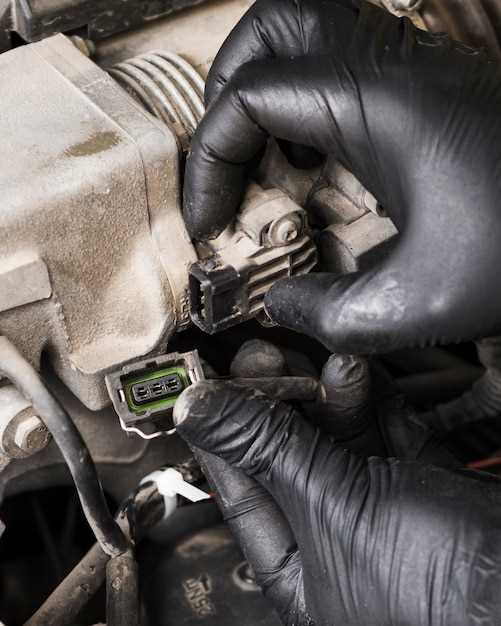

The Ford Mustang is celebrated for its performance and handling, but like any vehicle, it may experience transmission issues over time. One of the most common concerns among Mustang owners is related to the shifting of gears, which can significantly impact driving experience and vehicle performance. Understanding these issues and knowing how to address them can help maintain the longevity of your Mustang’s transmission.
Common transmission issues range from rough or inconsistent shifting to delayed engagement when selecting gears. These problems can stem from various factors, such as low transmission fluid levels, worn-out components, or electronic malfunctions. Addressing these concerns promptly is crucial to prevent further damage and costly repairs. This article will provide an overview of the symptoms to watch out for, potential causes of transmission problems, and effective solutions to keep your Mustang running smoothly.
Proper maintenance is key to avoiding transmission issues and ensuring smooth shifting. Regular fluid checks, timely fluid changes, and monitoring for any signs of wear or malfunction can prolong your transmission’s lifespan. In this guide, we will share valuable maintenance tips and practical solutions to empower Mustang owners to tackle transmission challenges confidently.
Identifying Common Shifting Problems in Mustang Transmissions

Transmissions in Mustangs can experience various issues that affect their shifting performance. Understanding these common problems is essential for proper diagnosis and timely maintenance. One prevalent issue is delayed engagement, where the vehicle hesitates before entering the desired gear. This situation may arise due to low transmission fluid levels or a malfunctioning solenoid.
Another common problem is hard shifting, often experienced as a jolt during gear changes. This can be attributed to issues such as worn-out clutch components, low fluid pressure, or a failing transmission control module. Drivers should pay attention to whether the transitions between gears are smooth or if they are met with abruptness.
Slipping gears is another concern that Mustang owners may face, characterized by the transmission unexpectedly shifting out of gear. This issue might indicate a failing torque converter or internal damage within the transmission. Regular inspections and fluid replacements are crucial to avoid this problem.
Strange noises during shifting can also signal a potential issue. Grinding gears or whining sounds may result from inadequate lubrication or mechanical wear. Addressing these noises as soon as they arise can prevent more significant transmission issues down the line.
Lastly, if the check engine light turns on, it could be related to the transmission system. Using an OBD-II scanner can help identify any trouble codes associated with transmission issues, allowing for appropriate troubleshooting steps. Regular maintenance and prompt attention to symptoms can greatly enhance the lifespan and performance of Mustang transmissions.
DIY Solutions for Mustang Transmission Shifting Issues

Experiencing transmission shifting issues in your Mustang can be frustrating, but there are several DIY solutions you can try before seeking professional help. A systematic approach to diagnosing the problem can save time and money.
Below are some common transmission issues and their corresponding DIY solutions:
- Problem: Slipping Gears
- Check Transmission Fluid Level: Low fluid can cause slipping. Ensure the fluid is at the correct level.
- Inspect Fluid Condition: Burnt or dirty fluid can affect performance. Change the fluid if it seems discolored or has a burnt smell.
- Replace Transmission Filter: A clogged filter can restrict fluid flow, leading to slipping.
- Problem: Delayed Engagement
- Inspect Fluid Level: Similar to slipping, check for low transmission fluid.
- Scan for Error Codes: Use an OBD-II scanner to check for any diagnostic trouble codes (DTCs) that may indicate electrical issues.
- Check Transmission Linkage: Ensure there’s no misalignment or damage to the linkage that could delay gear engagement.
- Problem: Gear Grinding
- Verify Clutch Operation: For manual transmissions, ensure the clutch is fully disengaging. Adjust or replace the clutch as necessary.
- Inspect Synchronizers: Worn synchronizers can lead to grinding. Replacement may be required for worn components.
- Check Transmission Fluid: Ensure the fluid is suitable for your transmission type and changed at regular intervals.
- Problem: Stuck in Gear
- Inspect Shift Cable: Check for damage or disconnection to the shift cable which may prevent shifting out of gear.
- Check for Obstructions: Ensure there are no foreign objects obstructing the gear lever mechanism.
- Examine Electrical Connections: For automatic transmissions, ensure all electrical connections are intact and free from corrosion.
Regular maintenance is key to preventing transmission issues. Always ensure proper fluid levels, change fluids periodically, and address small issues before they escalate. These DIY solutions can help keep your Mustang’s transmission running smoothly and efficiently.
Routine Maintenance Tips to Prevent Transmission Problems in Mustangs
Regular maintenance is crucial in preventing transmission issues in your Mustang. One of the most important tasks is to check transmission fluid levels frequently. Low fluid can lead to overheating and increased wear on components. Always ensure the fluid is at the recommended level and is in good condition, free of debris or burnt odor.
Another essential tip is to change the transmission fluid and filter based on the manufacturer’s service schedule. Fresh fluid helps maintain optimal performance and lubrication, reducing the risk of issues down the line. Consider using high-quality fluid that meets your Mustang’s specifications for the best results.
Additionally, pay attention to any signs of transmission problems, such as unusual noises, slipping, or delayed shifting. Addressing these symptoms early can prevent more severe damage and costly repairs. It’s beneficial to have your Mustang inspected by a professional if you notice any irregularities.
Lastly, ensure that all external components related to the transmission, like hoses and seals, are in good condition. Regularly inspect for leaks or wear, and replace any damaged parts promptly. This proactive approach will help you maintain a healthy transmission and enhance the longevity of your Mustang.






